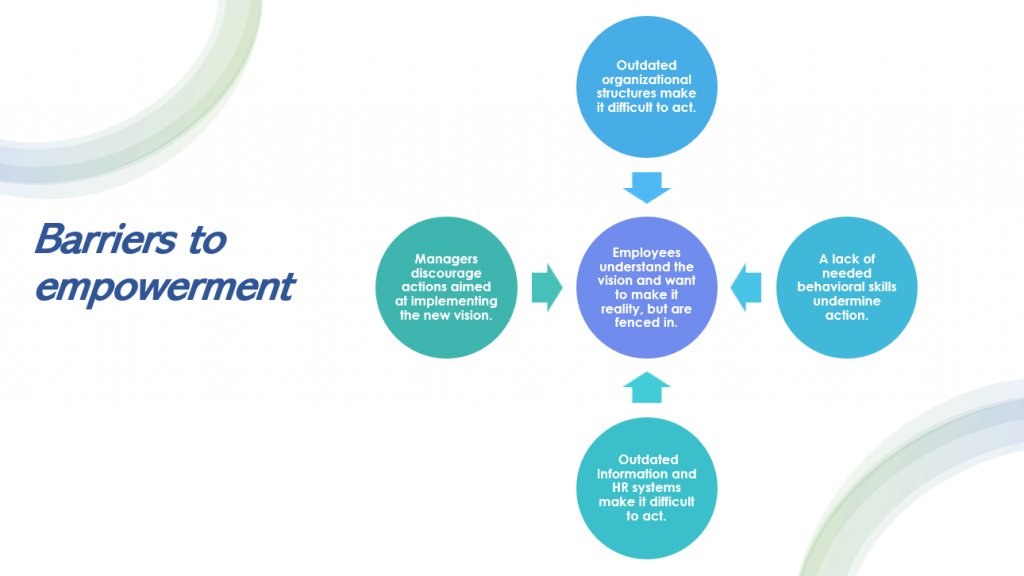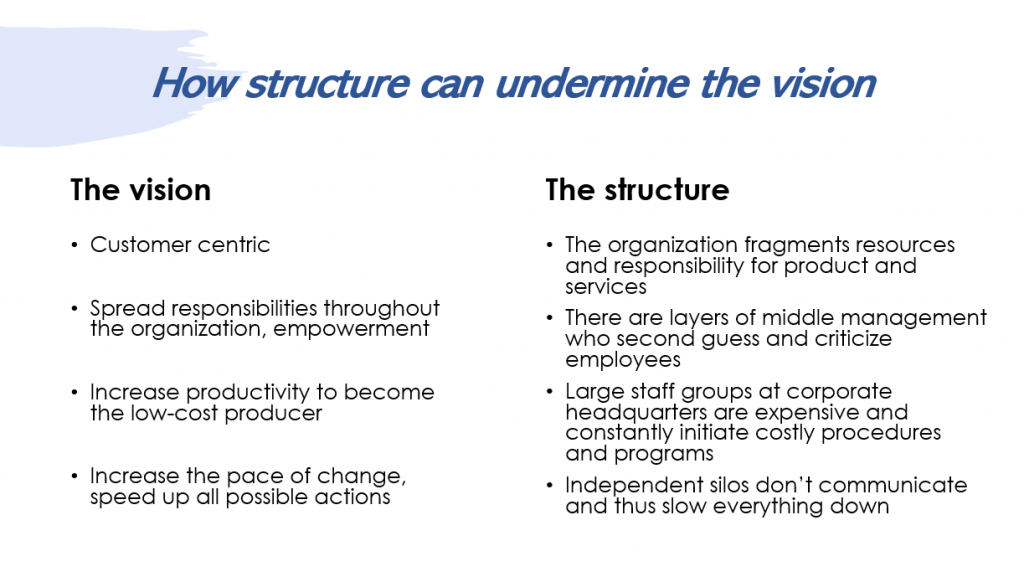Introduction
One week ago (13th of August) we published the fourth article in a series of eight about Change Management and the consequences for IT projects. It focused in-depth on Communication of the vision for IT projects. There is usually a high risk of massive undercommunication and therefore it is important that Communication is really taken seriously. The seven key elements of Communication mentioned by John P. Kotter can support you in avoiding making expensive mistakes. Even if you are not a communication expert, applying the key elements will already result in a much better IT project.
The experience from many different sources tells us that 75% of System Implementations fail to deliver their expected benefits. The one constant factor is that Change Management for People, Process and Technology is not appropriately addressed. Business leaders often do not realize enough how important this is or don’t know how to achieve it. Simply stated, but not so easily done.
This week we will look at step 5 (out of 8) of the model of Kotter: Empowering your employees to act on the vision.
You are encouraged to read further if you want to ensure your project ends up in the 25% quadrant.
The model of John Kotter for Change Management
This model was introduced by John P. Kotter, leadership and change management professor at Harvard Business School, in his 1995/2012 book, “Leading Change”. The model defines eight key steps for change management, arguing that skipping any of the steps can be enough for the whole project to fail. Below we will go through step five of the model and show what it means for IT projects.
- Establishing a sense of urgency
- Forming a powerful guiding coalition
- Creating a vision
- Communication
- Empowering your employees to act on the vision
- Actions needed
- Change structures
- New incentives
- Pitfalls
- Not removing powerful individuals who resist change
- Training employees on technical skills but not on new behavior
- Consequences for IT projects
- You will need co-workers that are convinced of the plan and properly trained to execute the work to be done. Rarely this is possible without organizational change as well. This means that Management and HR will need to do their part
- Again, follow structured project management, but give people the freedom to operate within the provided framework
- Actions needed
Empowering your employees to act on the vision
If you would like to create transformational change in your organization, you will need organizational change. Change can only happen if a substantial part of the employees embraces the change and helps in making it happen. This is however only possible if employees feel that they have the means, the power to change things. This demonstrates the relevance of “Empowerment”.
Effectively going through steps 1 – 4 of the model of Kotter, as mentioned above, already generates part of empowerment. But even when you have created a Sense of Urgency, formed a powerful Guiding Coalition, created a clear Vision, and communicated it well, there can still be barriers that keep people from executing the required Change. Step 5 in the model is to get rid of these barriers and by doing so, you use all the potential in your organization to implement change successfully. The usual barriers that need to be removed are the following:
- Structures
- Skills
- Systems
- Supervisors
This is envisioned further in the graph below:

Companies should have a look at their organizational structure and investigate whether their structure does not implicitly block efforts from employees to implement the new vision. Examples of blocking organizational structures:

Providing training on new skills to your employees is of utmost importance, but often forgotten. In transformational changes, people need to adapt the habits that they have cultivated for years. They will need to be trained not only on new technical skills but also on behavioural and social skills to make the new vision reality.
Information systems and HR tooling often cannot cope with the speed of change in the organization. This creates the risk that these do not actively support the transformational change that is envisioned.
Not removing powerful individuals that block change is often caused by fear of the consequences. Political considerations or concerns on short term results should be overcome. Regrets for not taking timely measures usually come too late.
Methods & Tools
The empowerment of employees is a five-step approach according to Kotter. This empowerment does not go into a single communication like “now you are empowered” but requires action at many fronts by the Guiding Coalition:
- Communicate a sensible vision to employees – If employees have a shared sense of purpose, it will be easier to initiate action to achieve that purpose.
- Make structures compatible with the vision – Unaligned structures block needed action. Also alignment of the job roles with the new vision is required.
- Provide the training employees need – Without the right skills and attitudes, employees will feel disempowered. This often leads to frustration.
- Align information and personnel systems to the vision – Unaligned systems also block needed action. The Guiding Coalition needs proper insights into what is happening throughout the organization.
- Confront supervisors who undercut needed change – Nothing disempowers people more than poor management. Demotivated employees do not support change.
Consequences for IT projects
IT projects are infrequently stand-alone projects and almost always they are part of a larger effort to transform an organization. For this reason, they should also be treated as such and integrated into a comprehensive change effort, as discussed in the previous articles. Also regarding “Empowering” your employees, IT projects are an integral part of the larger change effort. This means that all methods mentioned above need to be addressed in IT projects as well. This is something that cannot be delegated or outsourced to the IT organization alone. The Guiding Coalition has a clear responsibility here to make sure that People, Process and Technology are aligned.
Without alignment between People, Process and Technology, it is almost certain that you will not be in the 25% of successful projects.
Conclusion
Even when you have defined a clear Sense of Urgency, formed a powerful Guiding Coalition, created a clear Vision, and communicated it well, there will still be barriers that keep employees from executing the required Change. Step 5 in the model is therefore to get rid of these barriers and by doing so, empower your employees and using all the potential in your company to implement Change successfully.
Did you realize all this when you started your last IT project? Proper Change Management is key for successful IT projects! If you want more information or you have specific questions, you can book a free consulting session on our website: www.Q7-consulting.com
